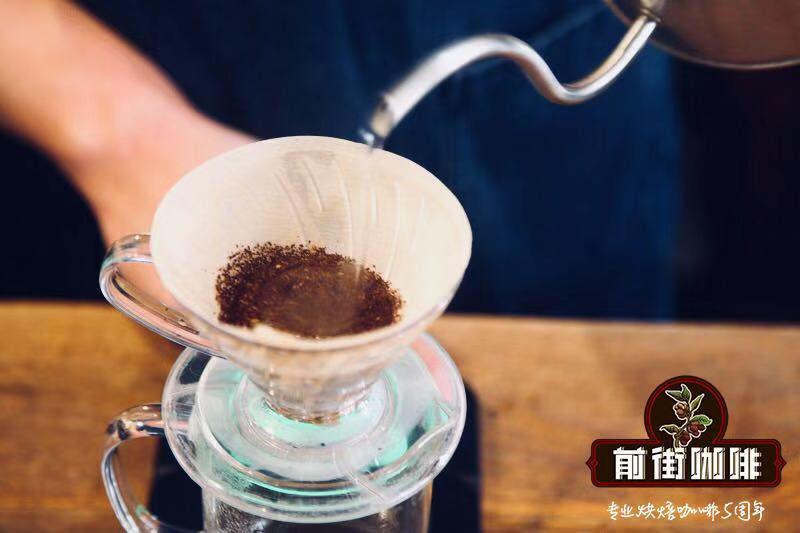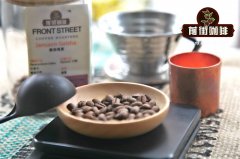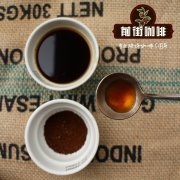Do you know what coffee honey is? is there anything special about coffee honey treatment?

Professional coffee knowledge exchange more coffee bean information please follow the coffee workshop (Wechat official account cafe_style)
Why is it called honey treatment?
There are three main ways to treat coffee: sun exposure, water washing and honey treatment. The sun drying method is to directly expose the coffee cherries before removing the shell and pectin layer; the water washing method is to screen the coffee pulp before exposure and ferment to remove the pectin layer; the honey treatment law is between the sun method and the water washing method: the pectin layer is directly retained and exposed after the coffee pulp is screened.
Then you will ask where is Mi?
The word honey treatment makes many people think that coffee is treated with honey, or that coffee tastes as sweet as honey, but in fact it is not either of these two explanations. The meaning of honey treatment comes from the sticky pectin layer of coffee beans before exposure, which feels as sticky as honey; when the coffee pulp is separated from the coffee beans, the outer coated pectin layer is exposed to absorb moisture in the air and make the pectin layer sticky.
When the coffee is screened, the pectin layer will remain on the outside of the coffee bean.
Why is honey treatment popular with coffee farmers?
At first, some people saw that this treatment could continuously improve the quality of their coffee beans, and it originated in Costa Rica, and this treatment is now ramming.
So why did coffee farmers in Costa Rica plan to treat it with honey in the first place? When coffee farmers want to improve the quality or price of their coffee, they have three choices: change the species of coffee, change the altitude of planting, and change the method of treatment. Just like most people who brew coffee, they will want to use relatively simple ways, such as adjusting the grinding scale and the amount of powder, and then adjusting the amount of water, pressure and temperature of the coffee machine. Most coffee farmers also want to change the treatment method first. Then they will consider planting new tree species or moving the manor, which requires investment of time and money.
Honey treatment is time-consuming and the construction method is exquisite.
Honey treatment is not simple, it takes a long time and must be handled carefully. What are the steps involved in honey processing?
First of all, coffee farmers should select ripe coffee cherries from the coffee tree, and then screen out the outer pulp, as mentioned earlier to retain the pectin layer outside the coffee beans. The pectin layer retains a high proportion of sugar and acid, which are the key to honey treatment.
The following steps are the most complex and exquisite part of honey treatment: exposure. The time must be mastered well, and the length of time is the key. If the exposure time is too short, it is impossible to convert the substance of the pectin layer into the coffee beans, and the time cannot be too long, and the action must be fast to avoid mildew beans caused by internal fermentation.
So how do you strike a balance? Put the beans on the sun scaffolding or cement floor and turn the beans several times per hour for the first few days until they reach the desired moisture content, a step that usually takes 6-10 hours. You need to turn it at least once a day for the next 6-8 days. It takes a lot of time, huh? The reason why honey treatment is so time-consuming is that beans absorb moisture from the air every night, so that it takes more time to expose themselves the next day.
The main difference between [white honey] treatment and [yellow honey] treatment is "the distinction of drying thickness", which determines the drying speed and drying uniformity, and then affects the sweetness and fermentation degree of coffee.
END
Important Notice :
前街咖啡 FrontStreet Coffee has moved to new addredd:
FrontStreet Coffee Address: 315,Donghua East Road,GuangZhou
Tel:020 38364473
- Prev

A brief analysis of what is coffee honey treatment | will honey-treated coffee beans be very sweet? what is the flavor?
Professional coffee knowledge exchange more coffee bean information please follow the coffee workshop (Wechat official account cafe_style) what is honey treatment? Honey treatment, called HoneyProcess or Miel Process, called Honey Coffee, does not mean that coffee beans are covered with honey. The honey here refers to the mucous layer of the coffee pulp. Except for the coffee cherries harvested by peeling machine.
- Next

Do you know how to deal with the silver skin of coffee? how is the silver skin removed from the roasted coffee?
Professional coffee knowledge exchange more coffee bean information please follow the coffee workshop (Wechat official account cafe_style) Silver skin (Silver Skin/Chaff): inside the parchment there is a thinner film covering the coffee beans. Because the color is glossy and silvery, people used to call it silver skin. This layer of silver will fall off during baking. Usually you find coffee when you grind it.
Related
- Beginners will see the "Coffee pull flower" guide!
- What is the difference between ice blog purified milk and ordinary milk coffee?
- Why is the Philippines the largest producer of crops in Liberia?
- For coffee extraction, should the fine powder be retained?
- How does extracted espresso fill pressed powder? How much strength does it take to press the powder?
- How to make jasmine cold extract coffee? Is the jasmine + latte good?
- Will this little toy really make the coffee taste better? How does Lily Drip affect coffee extraction?
- Will the action of slapping the filter cup also affect coffee extraction?
- What's the difference between powder-to-water ratio and powder-to-liquid ratio?
- What is the Ethiopian local species? What does it have to do with Heirloom native species?

